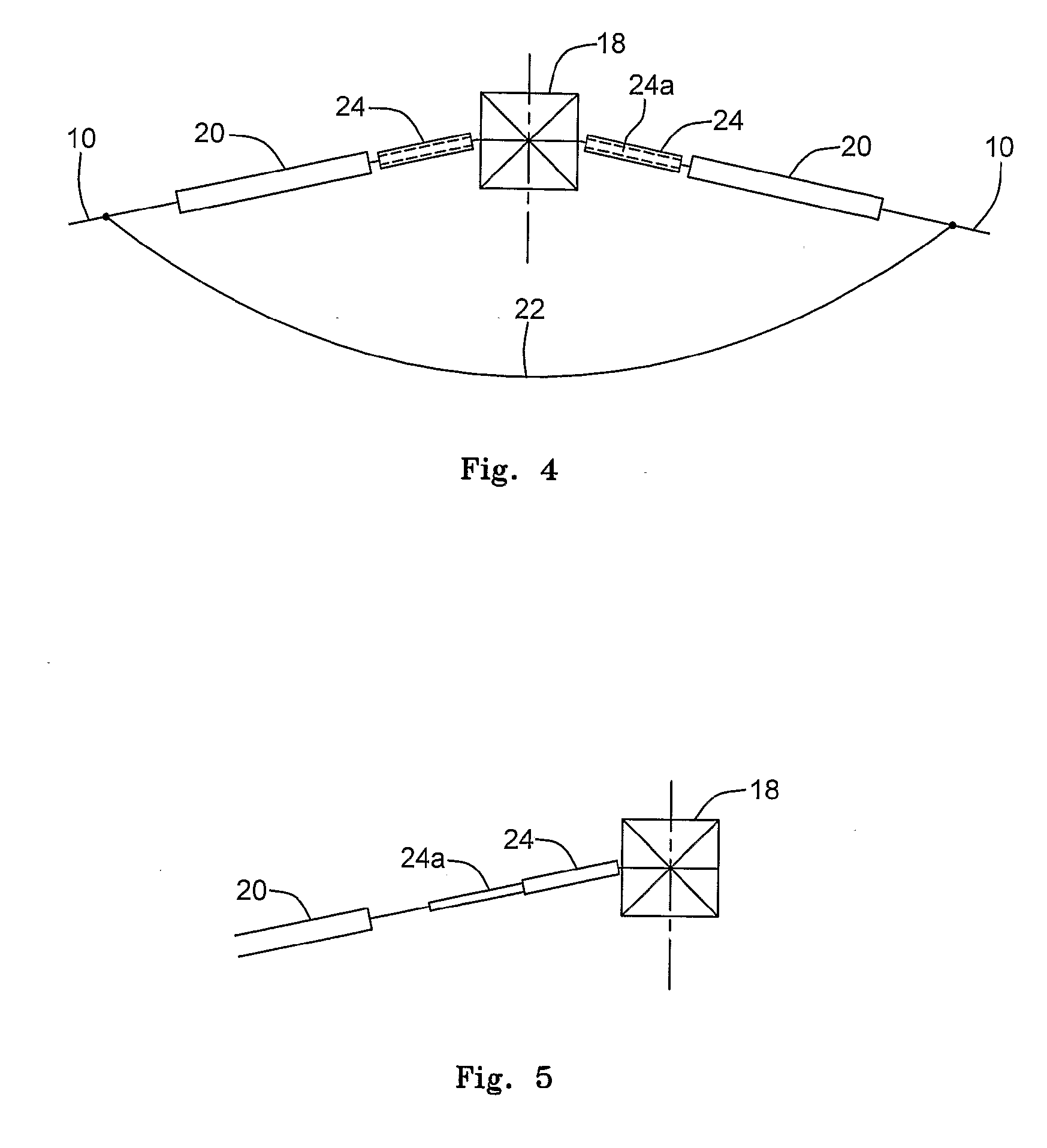Systems and Methods For Stabilizing Cables Under Heavy Loading Conditions
a technology of cable stabilization and load, applied in the direction of electrical cable installation, overhead installation, adjusting/maintaining mechanical tension, etc., can solve the problems of cable load, failures are particularly prevalent, failures can occur, etc., to reduce weight and cost, improve reliability, and uniform strain levels
- Summary
- Abstract
- Description
- Claims
- Application Information
AI Technical Summary
Benefits of technology
Problems solved by technology
Method used
Image
Examples
first embodiment
[0032]FIGS. 3A and 3B depict, respectively, an inactive state and an active state of a system embodying teachings of the present invention for stabilizing cable 10 supported from beam point connector 18.
[0033]FIG. 3A depicts the inventive system in an inactive state during normal conditions of loading of cable 10. Cable 10 connects to an insulating string 20 and is electrically connected to a similar cable on the opposite side of beam point connector 18 by a jumper 22. Disposed between insulating string 20 and beam point connector 18 is a relief brake 24 that carries the weight of cable 10 to beam point connector 18. A first end 26 of relief brake 24 is operably connected to beam point connector 18, and thus to utility tower 16, while a second end 28 of relief brake 24 is operably connected through insulating string 20 to cable 10. The body of relief brake 24 between first and second ends 26, 28 thereof is distensible in response to increased loading of cable 10.
[0034]Thus, as depic...
second embodiment
[0035]FIG. 4 depicts an inactive state of a system embodying teachings of the present invention in the system for stabilizing cable 10 upheld by an anchor or angle support structure with a support member represented in FIG. 4 by beam point connector 18. In the case illustrated in FIG. 4, on each side of beam point connector 18, a relief brake 24 is interposed between beam point connector 18 and a cable 10. Brake extension 24a is shown in dashed lines housed within the outer casing of relief brake 24.
[0036]As can be appreciated from FIG. 4, regardless of the specific implementation, one embodiment of the inventive system comprises a telescopic brake between a support structure and the cable that balances increasing cable loading, such as that encountered during ice formation the cable. The telescopic brake may be an hydraulic device or may contain one spring or a plurality of springs, or the like. As the loading on the cable increases, the telescopic brake extends in length. This inc...
third embodiment
[0037]FIG. 5 depicts an active state of a system embodying teachings of the present invention for stabilizing cable 10 when being upheld by a dead-end support structure that includes beam point connector 18.
PUM
 Login to View More
Login to View More Abstract
Description
Claims
Application Information
 Login to View More
Login to View More - R&D
- Intellectual Property
- Life Sciences
- Materials
- Tech Scout
- Unparalleled Data Quality
- Higher Quality Content
- 60% Fewer Hallucinations
Browse by: Latest US Patents, China's latest patents, Technical Efficacy Thesaurus, Application Domain, Technology Topic, Popular Technical Reports.
© 2025 PatSnap. All rights reserved.Legal|Privacy policy|Modern Slavery Act Transparency Statement|Sitemap|About US| Contact US: help@patsnap.com



